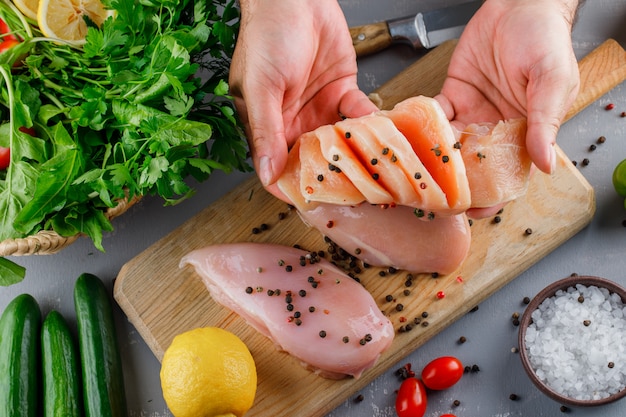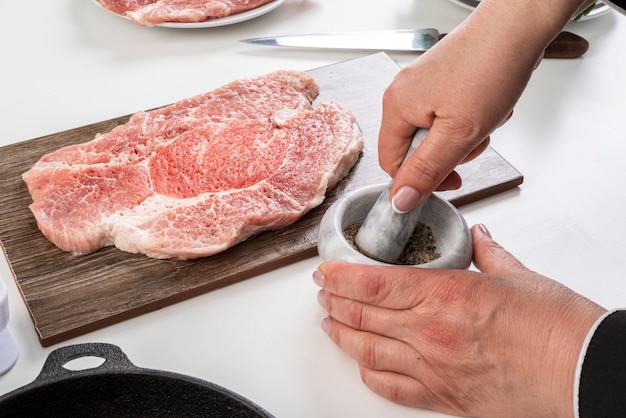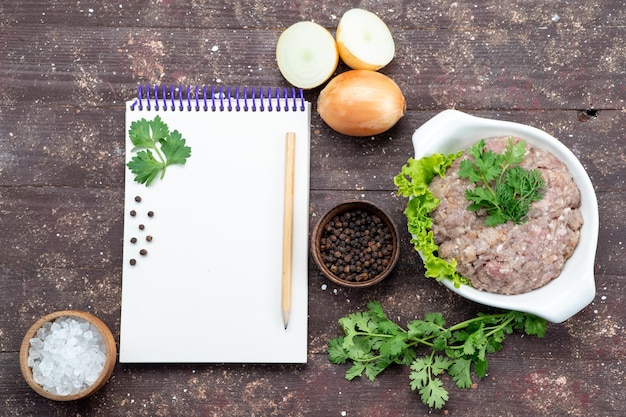Part 1: What is Salt Pork?

Salt pork, in its simplest form, is just pork belly that's been cured with salt. No fancy smokehouses, no fancy spices, just good old-fashioned salt. That's what gives it that unique flavour and texture. It's not as delicate as bacon, you know, it's got this firm, almost chewy bite to it. It's a real workhorse of an ingredient, and it's been a staple in many cuisines for centuries.
The Process of Salt Curing
The salt curing process is pretty straightforward. The pork belly is rubbed with salt, sometimes with a touch of saltpeter (a natural preservative) and sugar for added sweetness. The salt draws out moisture from the meat, making it less prone to spoiling and giving it that characteristic salty flavour. The curing process can take anywhere from a few days to several weeks, depending on the size of the cut and the desired level of saltiness.
Part 2: The History of Salt Pork

Now, you wouldn't believe the history behind salt pork. It goes way back, centuries ago, when people needed a way to preserve meat. Salt was a key ingredient in that process, because it drew moisture out of the pork, making it less likely to spoil. Imagine that, no fridges, no freezers, just good old-fashioned salt.
A Staple in Many Cultures
Salt pork has played a significant role in culinary history across the globe. It was a staple food for sailors, farmers, and just about everyone who needed a long-lasting and filling meal. Think about those long sea voyages, or those tough farm days – salt pork was there to provide sustenance. It was particularly important in areas where refrigeration was unavailable, ensuring that families had a source of protein throughout the year.
In the United States, salt pork was a key ingredient in Southern cooking, often used in dishes like collard greens, black-eyed peas, and cornbread. It also found its way into New England cuisine, appearing in dishes like clam chowder and baked beans.
Around the world, salt pork has been used in countless variations of stews, soups, and braises. Its rich, salty flavour lends itself beautifully to various culinary traditions.
Part 3: Salt Pork vs. Bacon: What's the Difference?

You've probably noticed that salt pork and bacon are often confused. Both are made from pork belly, but there's a big difference. Bacon is smoked and cured, while salt pork is just cured with salt. This means bacon has a more distinct smoky flavour and a softer texture.
Think of it this way: bacon is the flashy cousin, all smoky and sweet. Salt pork is the quiet, hardworking sibling that gets the job done. Both have their place in the kitchen, and it really depends on the flavour you're looking for.
Here's a simple table to summarize the key differences:
| Feature | Salt Pork | Bacon |
|---|---|---|
| Curing | Salted | Smoked and salted |
| Flavor | Salty, savory | Smoky, sweet, salty |
| Texture | Chewy | Soft, crispy |
| Fat Content | High | High |
Part 4: Buying and Storing Salt Pork
Finding the Right Salt Pork
So, where do you find this magic ingredient? You'll likely find it at butcher shops and specialty food stores, sometimes even in the meat section of your local supermarket. Look for a piece that's firm and has a uniform colour, with no discolouration. If you're unsure about what to look for, ask your butcher for guidance. They'll be happy to help you choose the best piece for your needs.
Storing Salt Pork
Salt pork is a pretty versatile ingredient when it comes to storage. You can keep it in the fridge for a few weeks, wrapped tightly in plastic wrap or parchment paper. For longer storage, you can freeze it, but make sure you wrap it well to prevent freezer burn. Just thaw it out in the fridge before using it, and you're good to go!
Part 5: How to Use Salt Pork
The Basics: Rendering the Fat
Before you start cooking with salt pork, you'll need to render the fat. This means heating it up in a pan until the fat melts and the pork becomes crispy. It's like magic – you get delicious, golden-brown pork cracklings and a pot of golden, flavour-packed fat that's perfect for cooking.
To render salt pork, simply:
- Cut the salt pork into small cubes or slices.
- Place the salt pork in a heavy-bottomed pan over medium heat.
- Cook, stirring occasionally, until the fat melts and the pork becomes crispy. This may take about 10-15 minutes. Be careful not to burn the pork.
Adding Salt Pork to Dishes
Now, here's the fun part. You can use salt pork in countless ways, both as a main ingredient and as a flavour enhancer. Here are a few ideas to get you started:
- Stews and Soups: The rich, salty flavour of salt pork is perfect for adding depth and richness to stews and soups. Just add a few slices to the pot and let it simmer with the other ingredients. The salt pork will add a beautiful depth of flavour that's simply irresistible.
- Beans and Greens: Salt pork is a classic ingredient for cooking beans and greens. It adds a smoky, salty flavour that really complements the earthy taste of these vegetables. Try it in your next pot of collard greens, black-eyed peas, or pinto beans.
- Cornbread: A little bit of salt pork fat adds a surprising amount of flavour to cornbread. Just mix it into the batter and bake as usual. The salt pork fat will give your cornbread a rich, savory flavour that you won't find anywhere else.
- Fried Foods: Fry up some salt pork for a crispy, salty snack. You can also use the rendered fat to fry other foods like potatoes, onions, or even eggs. The salt pork fat will add a delightful depth of flavour to any fried food.
- Stuffing: Salt pork can add a wonderful, savoury depth to stuffings, especially for holiday meals. The salt pork fat will lend a richness to your stuffing that's both delicious and comforting.
Part 6: Salt pork recipes: A Feast for the Senses
Alright, let's get those taste buds tingling. Here are a few of my favourite recipes featuring salt pork. These are simple, honest meals that are full of flavour and sure to please.
1. The Classic: Salt Pork and Beans
This recipe is a true testament to the simplicity and deliciousness of salt pork. You'll need:
- 1 lb salt pork, diced
- 1 cup dried beans, soaked overnight
- 1 onion, chopped
- 2 cloves garlic, minced
- 4 cups chicken broth
- 1 tsp dried thyme
- Salt and pepper to taste
Instructions:
- In a large pot, render the salt pork over medium heat until it's crispy. Remove the cracklings and set aside.
- Add the onion and garlic to the pot and cook until softened.
- Add the beans, broth, thyme, and a pinch of salt and pepper. Bring to a boil, then reduce heat and simmer for 1-2 hours, or until the beans are tender.
- Stir in the cracklings and serve.
2. Hearty and Delicious: Salt Pork and Cabbage Stew
This stew is perfect for a chilly evening. You'll need:
- 1 lb salt pork, diced
- 1 head of cabbage, chopped
- 2 carrots, chopped
- 2 potatoes, chopped
- 1 onion, chopped
- 4 cups chicken broth
- 1 tsp caraway seeds
- Salt and pepper to taste
Instructions:
- In a large pot, render the salt pork over medium heat until it's crispy. Remove the cracklings and set aside.
- Add the onion to the pot and cook until softened.
- Add the cabbage, carrots, potatoes, broth, caraway seeds, and a pinch of salt and pepper. Bring to a boil, then reduce heat and simmer for 30 minutes, or until the vegetables are tender.
- Stir in the cracklings and serve.
3. Crispy and Savoury: Salt Pork Cracklings with Maple Syrup
These cracklings are a delicious and easy snack or appetizer. You'll need:
- 1 lb salt pork, diced
- Maple syrup, for drizzling
Instructions:
- In a large skillet, render the salt pork over medium heat until it's crispy. Remove the cracklings from the pan and drain on paper towels.
- Drizzle with maple syrup and serve.
Part 7: Salt Pork Tips and Tricks
Here are a few tips and tricks that I've learned over the years:
- Don't be afraid to experiment. Salt pork is a versatile ingredient, so feel free to experiment with different recipes and flavour combinations. Try it in your favourite pasta sauce, stir-fry, or even a simple omelette.
- Use the rendered fat. Don't throw away the fat! It's incredibly flavorful and can be used to cook other foods. Use it to fry potatoes, sauté vegetables, or even make a simple pan sauce for your next protein.
- Store the cracklings. You can store the cracklings in an airtight container at room temperature for a few days. They're delicious sprinkled over salads or soups, or even enjoyed as a crunchy snack.
- Keep it simple. Salt pork is a rustic ingredient, so don't overcomplicate your dishes. Let the natural flavour shine through. simple recipes often allow the unique flavour of salt pork to take centre stage.
Part 8: FAQs about Salt Pork
1. What's the best way to render salt pork?
The best way to render salt pork is in a large skillet over medium heat. Just add the salt pork to the pan and cook, stirring occasionally, until the fat is melted and the pork is crispy. This usually takes about 10-15 minutes. Make sure you watch it closely, because it can easily burn if it's not attended to.
2. Can I use salt pork in place of bacon?
Yes, you can use salt pork in place of bacon in many recipes. Just keep in mind that salt pork has a stronger, more salty flavour. You may need to adjust the amount of salt in the recipe accordingly. And the texture will be quite different, remember, salt pork is chewy, bacon is softer. Experiment with different ratios to find what works best for your palate.
3. Is salt pork healthy?
Salt pork is a fatty food, so it's not the healthiest choice. However, it can be part of a balanced diet if you enjoy it in moderation. The rendered fat can be used to cook other foods, which helps to add flavour without adding too much additional fat. You can also choose to use leaner cuts of salt pork, if available.
4. What does salt pork taste like?
Salt pork has a unique flavour that's both salty and savory. It's also got a hint of smokiness, even though it's not smoked. The flavour is quite intense, so you don't need to use a lot of it in your dishes. A little bit goes a long way. Think of it as a flavour enhancer that adds depth and complexity to your dishes.
5. Where can I buy salt pork?
Salt pork is usually available at butcher shops, specialty food stores, and sometimes even in the meat section of your local supermarket. If you can't find it at your local grocery store, you can often order it online. Just remember to check the storage recommendations, so you can enjoy it to its fullest.
Part 9: Salt Pork: A culinary legacy
Salt pork is more than just an ingredient, it's a culinary legacy. It's a reminder of simpler times, of hardworking families and hearty meals. It's a taste of tradition, of the connection between food and family. Salt pork has a rich history, and its presence in the kitchen evokes a sense of nostalgia and comfort. It's a testament to the ingenuity and resourcefulness of our ancestors who found ways to preserve food and nourish their families.
So, the next time you see salt pork at the butcher shop, don't hesitate to pick it up. It's an ingredient that's sure to add flavour and character to your dishes, and a bit of history to your kitchen table. Enjoy the journey, and remember, with salt pork, a little bit goes a long way!
Everyone is watching

Prime Rib Roast Cooking Time Chart: Per Pound Guide
Cooking TipsPrime rib roast. Just the name conjures images of lavish dinners, crackling fires, and hearty laughter. It’s ...

How Long to Bake Potatoes in the Oven (Perfect Every Time)
Cooking TipsBaked potatoes are a staple in my kitchen. They're incredibly versatile, delicious, and surprisingly easy to m...

Perfect Rice Every Time: The Ultimate Guide to Cooking Rice
Cooking TipsAs a self-proclaimed foodie, I've always been a bit obsessed with rice. It's the foundation of countless cuisi...

The Ultimate Guide to Cooking Asparagus: Tips, Techniques, and Recipes
Cooking TipsAsparagus. The mere mention of this spring delicacy conjures up images of vibrant green spears, crisp and burs...

Ultimate Guide to Cooking the Perfect Thanksgiving Turkey
Cooking TipsThanksgiving. Just the word conjures up images of overflowing tables laden with delicious food, the scent of r...
